Of the four great ancient civilizations, three were studied extensively and are known to almost all individuals, Mesopotamia, Egypt, and China.
The fourth civilization, the Indus Valley Civilisation, which prospers along the flood plains of the Rivers Indus and Gaggar-Hakra, is lost in human memory.
Today, relative to other cultures, we know little about this technologically advanced society.
Check out these less well-known Indus Valley Civilization Facts that just deserve to be shared.
10. Politics
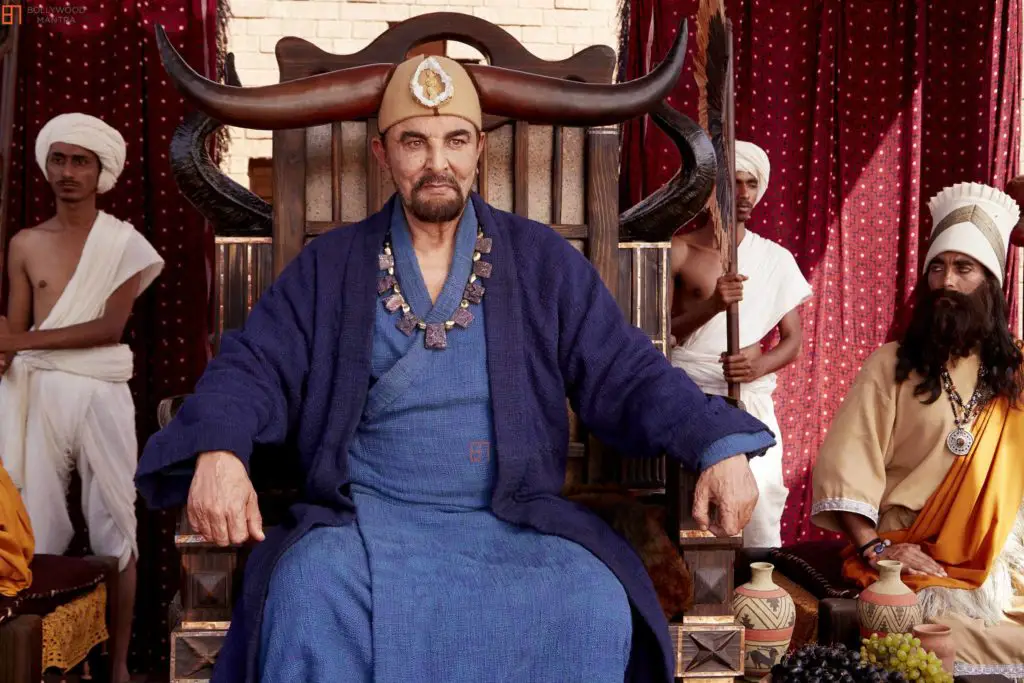
There was no sign of a ruler or a powerful authority throughout the region is a feature of Indus valley civilization that made this culture unique to scholars.
We know nothing of their system of governance.
While there is little or no proof that such an ordered and hierarchical community could exist without local or central regulation.
Contrary to any civilization, in which a king or a priest was the main figure of the whole political structure, nobody has ever found such a figure references.
A terracotta figure of what is supposed to be the priest-king is the closest depiction of a figure.
The lack of a structure that can be seen as of fundamental importance like a palace or a temple is another amazing fact which surprised the researchers.
The appearance of a temple or a palace distinguished every other early civilization.
There are several public bathrooms and granaries, but a palace or temple can not be connected with a structure even remotely.
Many scholars have assumed that the cities of Indus Valley are an egalitarian society.
There were no imagery engravings, no evidence, or weapons found in the cities of any kind of war activities in civilization.
No one has seen such a picture of Harappan cities relative to Mesopotamian city-states, which were continuously warring and portraying their warfare in their art and written works.
There has been very little awareness of its political and religious structure. We don’t know who or how they worshiped God.
There have been several discussions about the same matter, but it is hard to say anything.
9. Discovery
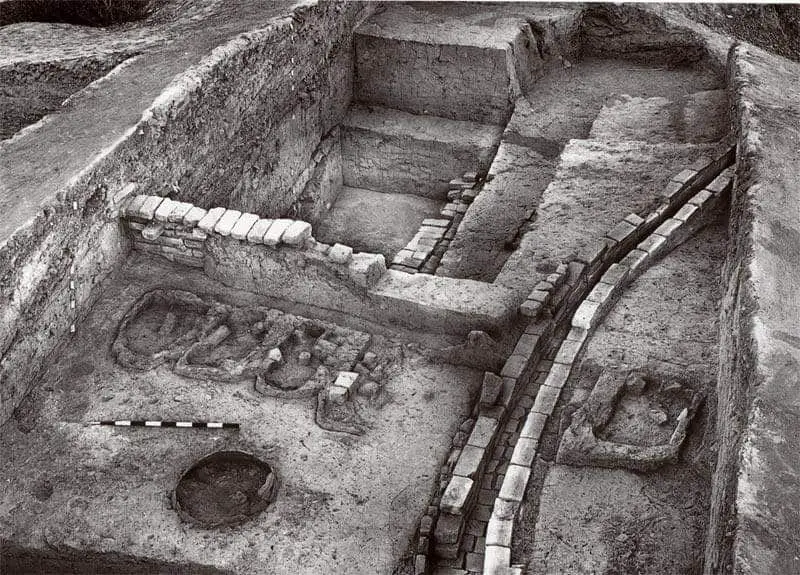
Mehrgarh was a small farming town that began in even before pre-Harappan times.
It is one of the oldest agricultural and livestock sites in South Asia ever discovered.
The Indus Valley Civilization (IVC) was a Bronze Age civilization from the present-day northeast of Afghanistan to Pakistan and northwest India (3300-1300 BCE; mature period 2600-1900 BCE).
In the basins of the Indus River, one of Asian’s major rivers and the Ghaggar-Hakra River once traveled across north-western India and eastern Pakistan.
It was together with Ancient Egypt and Mesopotamia, one of the three earliest civilizations of the world among the three most widespread ones.
By 1999, there had been over 1,056 cities and towns, 96 of them excavated, mainly in the general region and tributaries of the Indus and Ghaggar-Hakra rivers.
The settlements include Harappa’s main urban centers, Mohenjo-Daro, the Dholavira, Ganeriwala in Cholistan and Rakhigarhi.
It is one of the UNESCO World Heritage Site.
8. Use of Seals

It contains seals in over 4,000 plain rectangular stone tablets.
There are also seals made from at least a dozen other materials.
The seals contain pictures and inscriptions of humans, godlike beings, etc.
Certain seals were used to stamp clay on commercial goods, but they probably were used for other purposes.
When the inscriptions were not yet decrypted, it is hard to tell exactly what the “seals” are supposed to do.
Included in various objects, they found at least 400 distinct symbols. Such symbols are usually shown in 3-20 strings even though scholars did best they couldn’t interpret or translate them.
This is one of the main reasons we know little about this civilization.
Some scholars argue even whether we should consider these symbols a script since no text exceeding 20 symbols was ever found.
Others believe that these symbols only refer to names and give no real significance.
Analyzes of these scripts by computer revealed that these symbols are a blend of sounds and concepts like the Hieroglyphs of Egypt.
Nevertheless, this remains a mystery due to the absence of any translation medium.
7. First dentist in the world

In 2001, archeologists from Mehrgarh (Pakistan) investigating the remains of two men found that people who were living in the Indus Valley Civilization had an awareness of dentistry since the early Harappa period.
In April 2006, the scientific journal Nature later declared that there was first evidence in Mehrgarh for the drilling of human teeth.
In a Neolithic graveyard of Mehrgarh dating back to 5,500 BC–7,000 BC, they discovered drilled molar crowns from 9 adults.
The researchers conclude their findings to suggest some kind of proto-dentistry tradition in the region’s early Indus cultures.
6. Harappan people developed the most precise measurements humanity had at the time.

The stone cubes are specifically designed for weights that increase in ratio from 5:2:1, with weight ranging units 0.05, 0.1, 0.2, 0.5, 1, 2, 5, 10, 20, 50, 100, 200, 500.
The cubes have been detected by archaeologists. The weights currently do not match any of Egypt or Mesopotamia’s existing systems at the time.
It is, therefore, safe to conclude that this is a system invented locally.
In Lothal in Gujarat markings on an ivory scale show their smallest split was around 1.704 mm, the smallest division ever in the Bronze Age.
5. They used to worship Lord Shiva

Thousands of graved seals, amulets, usually steatite, agate, chert, copper, faience, and terracotta were discovered from Harappan sites.
A famous seal shows a figure in a position recalling the location of the lotus and surrounded by animals.
This describes as a God, Pashupati Mahadev that is the beloved counterpart to the Vedic Lord Shiva in the Indus civilization.
Besides other fertility and phallic symbols, it is widely agreed that the Harappan people worshiped a Mother Goddess.
The recovery of many figurines from nearly every excavated site shows that the worship of Mother Goddess or the cult of fertility in civilization was widespread and popular.
4. Revolutionary design of Houses
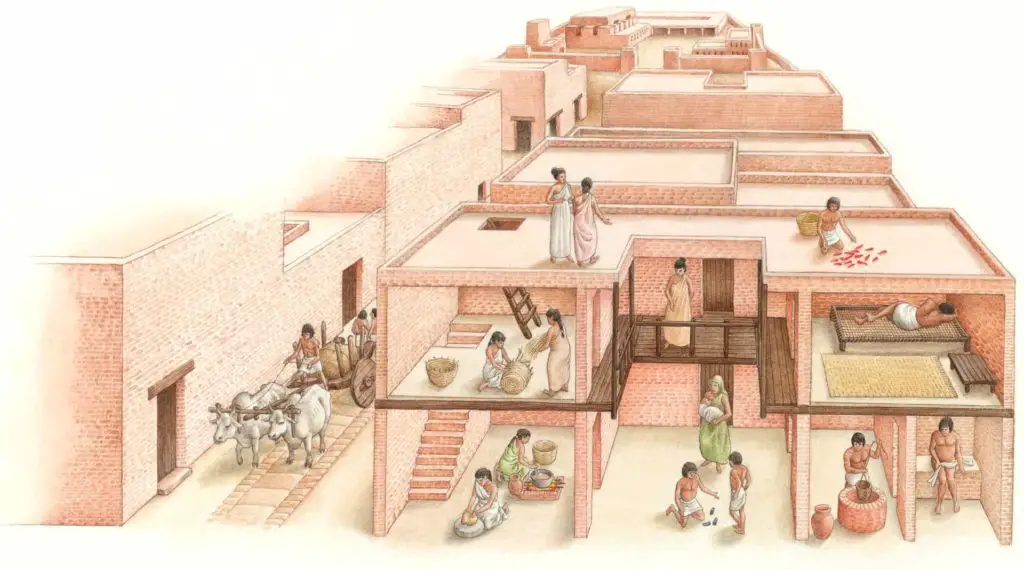
The civilization of the Indus Valley had excellent masons who could manufacture load-bearing brick structures with ease up to two stories.
The houses have a central courtyard and an accessible flat terrace.
3. Urban planning
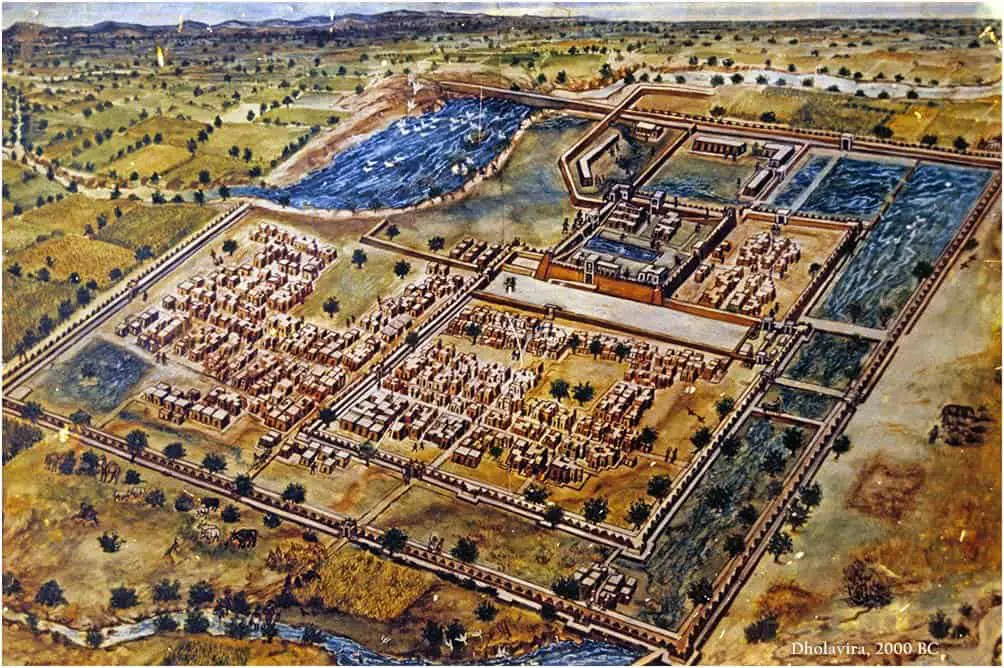
A well-planned road grid and a complex drainage system showed that the people in the ancient town planning of Indus valley civilization were skilled urban planners who placed importance on water management.
Archaeologists have found wells in the city, and almost every house has a clearly defined bathing area and covered drainage system.
They also noticed a highly advanced water management network in Mohenjo-Daro with 80 public sanitary facilities and over 700 wells.
The growing house had its own bathroom and wells were strategically located for all neighborhoods to provide water. A system for stocking rainwater also existed.
The discovery of the great bath of Indus valley civilization reveals their architectural ability.
2. Biggest Civilization in Ancient world
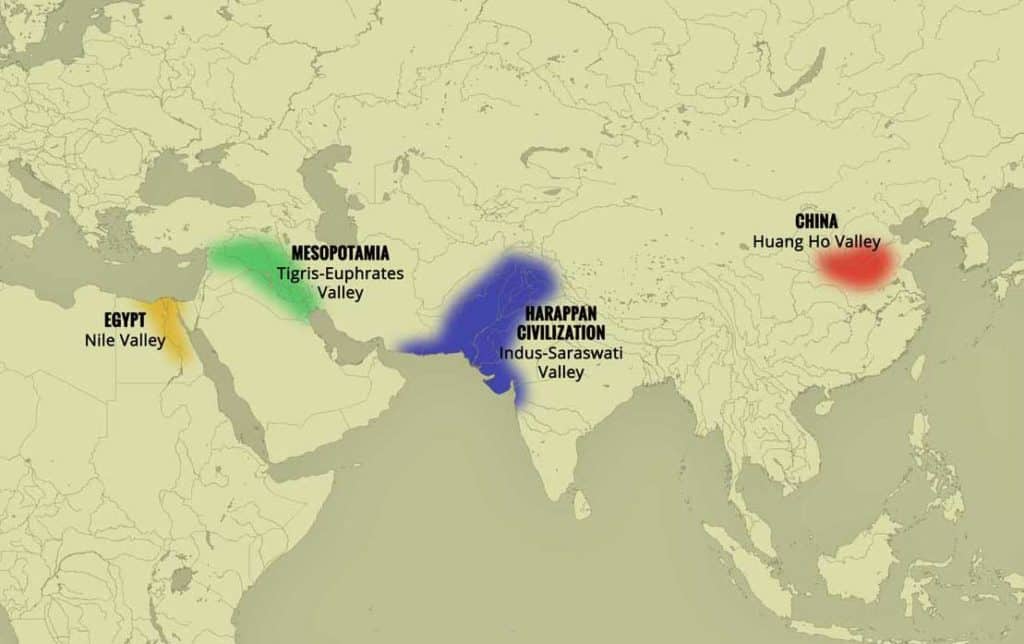
In geographical terms, the Indus Valley was largest among the four ancient civilizations, Mesopotamia, Egypt, and China.
It was distributed in the area of the area of 1,260,000 sq km.
The civilization stretched across present-day India, Pakistan, and Afghanistan.
On today’s map, if such a large nation existed, it would be 22nd between Niger and Angola.
This civilization spread from Ghaggar-Hakra Valley to the east and west side of the Balochistan River to the Makran, from Afghanistan to Daimabad in Maharashtra to the south.

The civilization of the Indus Valley had a total population of more than five million people.
It is higher than overall New Zealand’s current population.
Most of its people were craftsmen and traders. In more than 1056 cities and settlements of Harappan, 96 of which were excavated have been found.
They are located mainly in the broad regions of the rivers Indus and Ghaggar-Hakra and their affluents.
The main urban centers were Harappa, Mohenjo-Daro, Dholavira, Ganeriwala, and Rakhigarhi.
Rakhigarhi is now the largest known site of the Harappan civilization in Haryana, India.
It is bigger than the well-known Mohenjo-Daro site in Pakistan.
1. Mysterious death
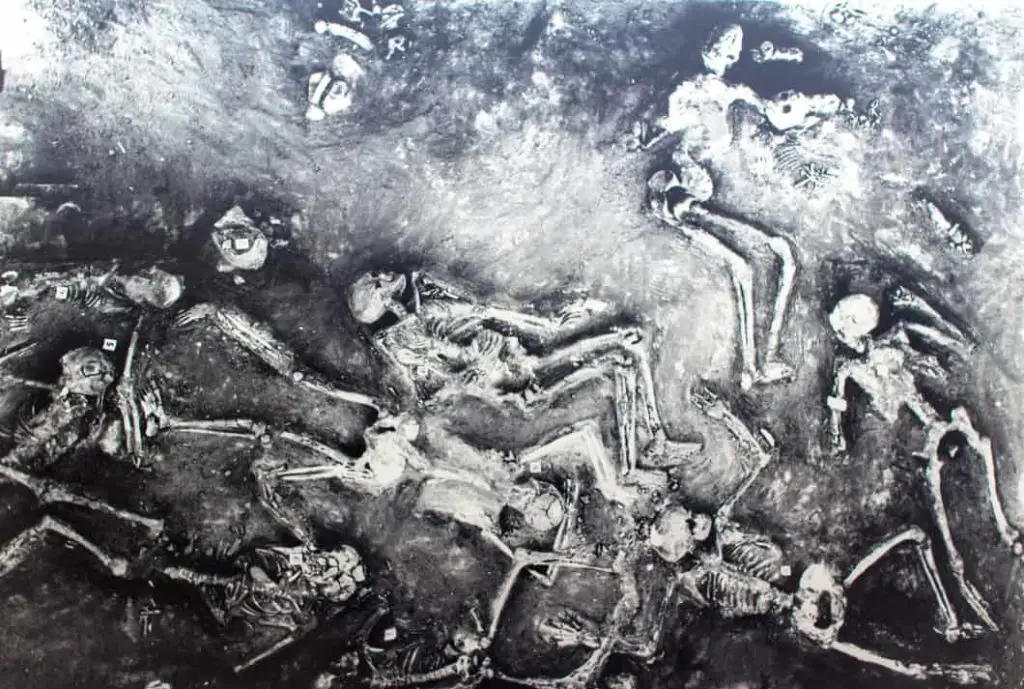
Excavations to Mohenjo-Daro’s streets revealed 44 skeletons scattered across the streets, in a position where they had just come so suddenly that they could not reach their homes.
All the bones, including a mother and a baby, still holding hands are flattened to the ground.
Archaeologists have found that these people have all been dead by violence, but the causes of the violence remain unexplained.
Lying in the streets in distorted positions within layers of scratches, ashes, and debris.
The sudden decline of Indus Valley civilization has long been a matter of wonder among researchers.
There is no convincing evidence that any town in Harappan has ever been burned, flooded, physically attacked, or taken by force inside.
It is more likely that after natural disasters or rivers such as Indus and Ghaghra-Hakkar collapsed, the cities have changed course.
This would have affected the local agricultural economy and the development of society as a trade center.
Through continuous digs and anthropological work, the disappearance of this enigmatic civilization is certainly a mystery.
So, how did the Indus valley civilization end?
There are six speculated theories-
- The nearby desert penetrated the fertile region and made it unfertile.
- The area has been devastated by frequent floods.
- Aryan invaders killed and destroyed the civilization of the Indus Valley. The people of Harappan enjoyed harmony. They had no weapons to strike or protect themselves against others. They had hunting or farming equipment. So they couldn’t stand up to the attackers.
- The end was caused in part by shifting habits of the flow. Such changes included the Hakra River’s drying up and changes in the Indus River course. The river shifts affected agricultural and economic systems, and many people left the Indus Valley region’s cities.
- Destruction was triggered by earthquakes and epidemics.
- There is an increasing number of “alternative archeologists” and scholars who have not settled for hypotheses that do not adequately explain the conditions of the skeletal remains and have found other explanations. One such individual is the British Indian scholar David Davenport, who spent twelve years studying ancient Hindu scripts and evidence at the site where once stood the great city. Atomic Destruction in his book in 2000 B.C. This shows some shocking findings: the artifacts found on the site seemed to be fused, glassified by the heat of up to 1500 ° C, accompanied by rapid cooling. There seemed to be an’ epicenter’ within the city itself about 50 yards wide in which everything was crystallized, fused or melted, and 60 yards from the middle the bricks were melted on one. In his book Riddles of Ancient History, Gorbovsky reported that at least one human skeleton had been found in the region with a radioactivity rate of about 50 times higher than it should have been due to natural radiation. Davenport said that what was observed in Mohenjo Daro was exactly in line with what was seen in Nagasaki and Hiroshima.
These were Indus Valley Civilization Facts.
I hope you learned something & don’t forget to share this informational post on social media.
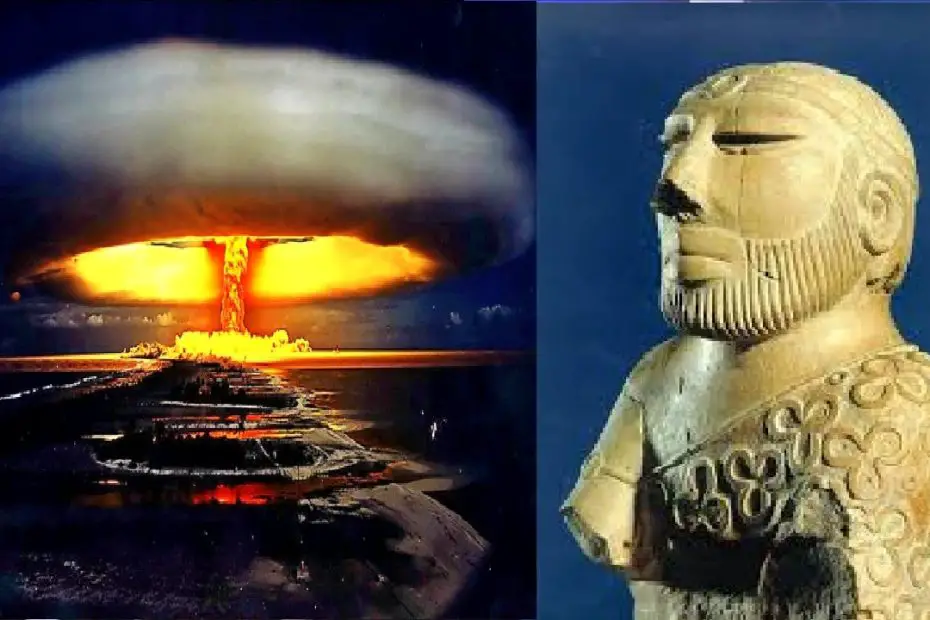
Where is the baby and the women in the picture of no.1 pic?
Here’s the pic-
https://c.tribune.com.pk/2015/04/870792-skeletons-1429165110.gif